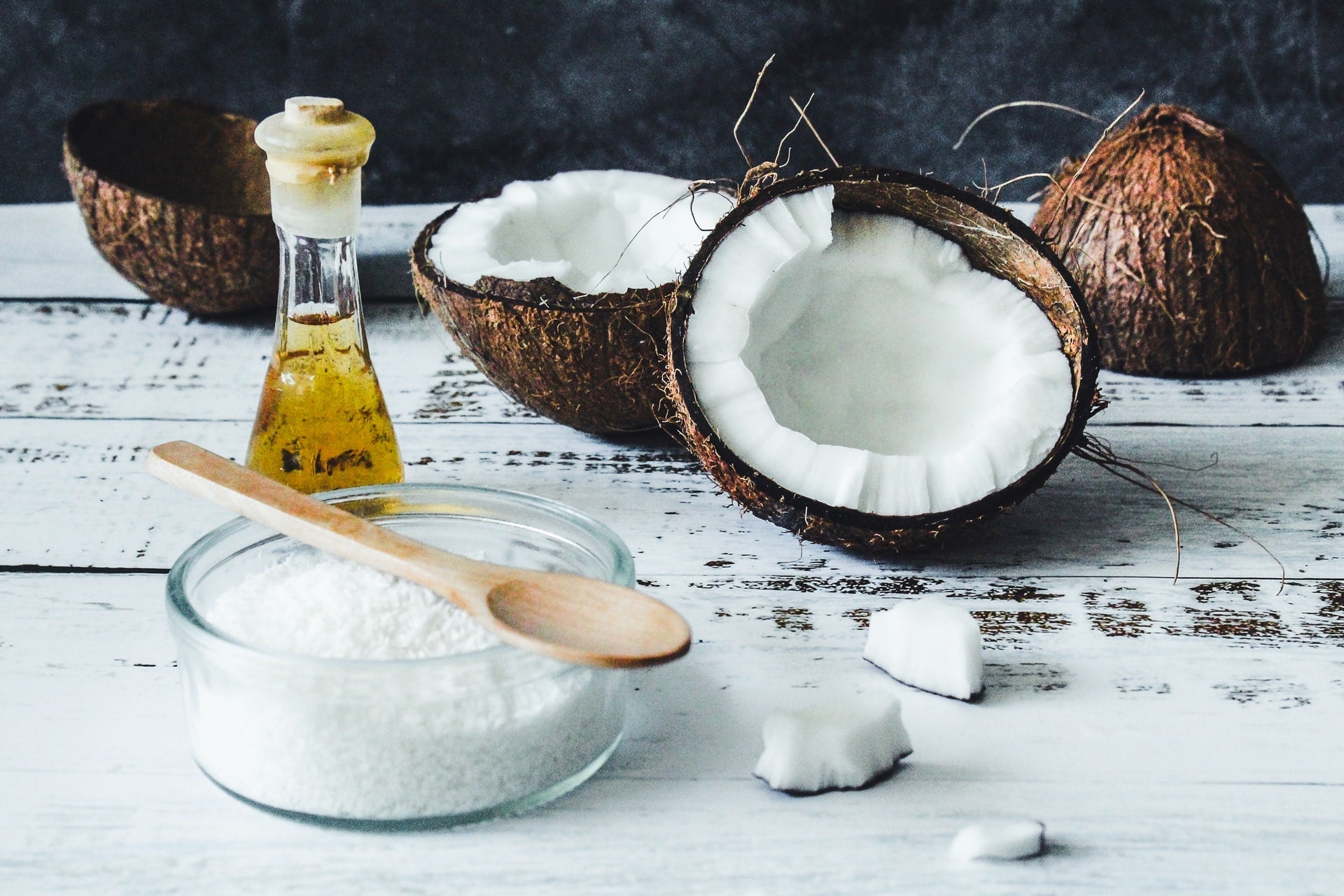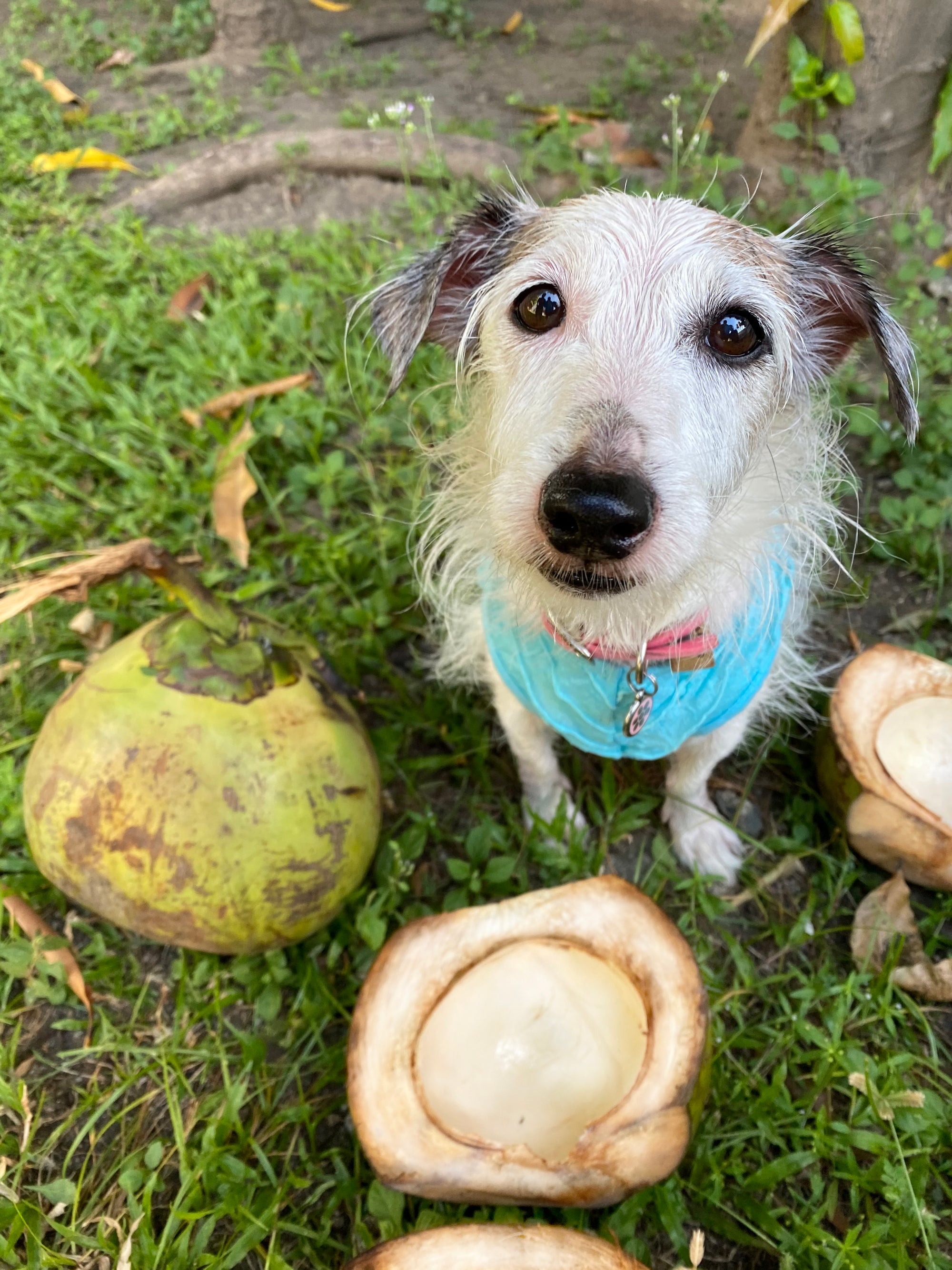If you’re a fan of coconut oil, you may know that there are two types of edible coconut oil available in the commercial market: refined coconut oil, also known as refined, bleached, and deodorized (RBD) coconut oil and virgin coconut oil (unrefined). There are many differences between these oils, and in order to fully understand their differences, it’s helpful to understand how they are made.
Not All Coconut Oils Are Equal
Did you know that there are over a dozen ways to make coconut oil? What's more, the quality of different coconut oils varies greatly. That's because quality is highly dependent on various factors, from the coconuts, to processing methods.

There are many species of coconuts used to make coconut oil. In addition to the type of coconut used, the nutritional value of our food supply is affected by soil conditions, picking crops too early, freezing, drying, and processing. Because of all these factors, not all coconut oils are equal. The various grades of coconut oil are then used in many diverse industries. These include commercial food processing, cooking, nutraceutical and pharmaceutical industries, and cosmetic applications such as soaps, lotions, and shampoos.
In this first blog post of 2021, we’ll go back to basics by focusing on the differences between virgin (unrefined) coconut oil and refined coconut oil. We'll also take a close look at how they’re made, share some tips for determining the quality of a coconut oil, and explain the methods we use to produce CocoTherapy Virgin Coconut Oil.
What's the Difference Between Virgin Coconut Oil and Refined Coconut Oil
Virgin coconut oil is unrefined coconut oil. This means that the oil was made without any chemicals or solvents. A good virgin coconut oil smells and tastes like coconuts. Refined coconut oil is made with solvents and hexanes to extract the oil and to purify it. Refined coconut oil is usually referred to as RBD oil, which stands for refined, bleached, and deodorized. RBD oil doesn’t smell or taste like coconuts and has a very bland taste.
How Is Coconut Oil Made?
Very simply, to make coconut oil, coconut milk is extracted from the coconut kernel (the white flesh of the coconut) by pressing it in some way. The coconut milk contains the oil. The oil is then separated from the milk to make coconut oil.
There are three main elements in coconut oil production that affect the quality of the oil:
1) The type of coconut kernel used
2) How the coconut milk is extracted from the coconut kernel
3) How the oil is separated from the coconut milk
In the next section of the post, we'll take a look at these three elements and explain how they affect the quality of the coconut oil being produced.
Step 1: The Coconut Kernel Used
All coconut oil is extracted from the coconut kernel (also referred as coconut meat), which is the white flesh of a coconut. However, depending on the facility that makes the oil, the coconut kernel can be in various forms:
1) Fresh, wet coconut meat – coconut kernel that has been grated from a newly harvested coconut. When fresh, wet coconut meat is used to make coconut oil it is usually referred to as "wet-milled". Wet milling produces premium quality coconut oil that retains most of the nutrients found in fresh coconuts.
2) Dehydrated/dried coconut meat – coconut kernel that has been dried with temperatures between 158ᵒ F/70ᵒ C to 167ᵒ F /75ᵒ C. Dried coconut kernel should have a moisture content of 10-11% for oil extraction. The dried kernel may be rehydrated with water when ready to use. Coconut oils made with dried coconut meat may be considered virgin coconut oil if no chemicals or solvents are used, and the maximum moisture of the final coconut oil product does not exceed 0.1 %.
This is the most common type of virgin coconut oil that you'll find online and in stores today. It is mass produced but is of a higher quality oil than RBD coconut oil, as it starts with air-dried coconut and not copra.
3) Copra – coconut kernel that has been dried via heat from smoke, sun, or kiln. When copra is made, it's important to dry the coconut meat properly, with as low moisture content as possible, as it is highly susceptible to the growth of molds and their production of aflatoxins. Because of this, bleach, hexanes, or solvents are usually used to clean and disinfect the copra.
When copra is used to make coconut oil, some form of liquid (usually water) is added to rehydrate the dried coconut. Coconut oil made from copra is considered refined or RBD (refined, bleached, and deodorized) coconut oil. The "bleaching" process includes a filtration process to remove impurities. A "bleaching clay" is used for this filtering. Steam is then used to deodorize the oil.
RBD coconut oils have a very bland taste, with little or no odor. They also have far fewer health benefits than virgin coconut oil because of the way they are chemically processed. RBD coconut oils are often low in healthy nutrients and contain lesser amounts of lauric acid and other medium-chain fatty acids (MCFAs) that help keep the body healthy compared to virgin coconut oil. This is usually as the result of being made from coconuts that aren’t fresh, or from old copra. Low-quality coconut oil may also contain trace amounts of heavy metals such as arsenic, copper, iron, and lead.
Step 2: Coconut Milk Extraction
It's a common misconception that coconut oil comes from coconut water. In fact, coconut oil is made from coconut "milk" extracted from the coconut kernel. When the coconut kernel is pressed, it releases the coconut milk – a pure white mixture of coconut water and oil.

There are many ways to extract coconut milk from the coconut kernel, and the method of extraction also determines the quality of the oil. Extraction methods used typically depend on the type of coconut kernel used.
Here are a few of the most common extraction methods:
1) Cold press – is typically done by hand using a tool or hydraulic press to control the speed and pressure of pressing. This enables temperatures to be carefully controlled while pressing. There are many types of machines and tools used to extract coconut milk, but it's important to note that pressing will always generate some degree of heat. However, to be true cold-pressed, pressing temperatures should not exceed 115ᵒ F. Cold pressing keeps moisture levels in coconut oil low. Virgin coconut oil should contain less than 0.2% moisture levels.
2) Expeller press – uses a "screw press" that utilizes a mechanical method for extracting coconut milk. Mechanical screw presses use intense pressure to extract oil. This creates friction that typically generates heat around 122°F/50°C and higher. Expeller pressing increases moisture levels in coconut oil. Expeller-pressed oils are not considered "true" cold-pressed and raw virgin coconut oil. According to raw food proponents, food that has been heated over 115ᵒ F is not considered raw.
Extracting the oil using high pressure expellers does not qualify for the label "cold pressed" since temperatures higher than 122°F/50°C are generated inside the expellers. However, this type of oil does qualify to be labelled "virgin". It's important to be aware that some manufacturers use the term "cold pressed" on their labels even though the oil is processed at temperatures higher than 122°F/50°C.
3) Solvent expelled – this method is used when expressing milk from dried copra. Chemicals such as hexanes and solvents are used to extract the milk. This method greatly increases moisture levels in coconut oil. Chemically pressed oils are not considered virgin coconut oil. Coconut oils made using this method are considered refined coconut oils.
Step 3: Method of Coconut Oil Separation
Once coconut milk has been extracted, the coconut oil is then separated from the milk. Again, there are many different ways to do this, which also determines the quality of the oil.
Natural separation of the oil from the milk usually occurs because of the different densities of water and oil. Oil is lighter than water, so when coconut milk is left to sit in a bottle, the coconut oil naturally rises to the top. The oil that separates on the top is skimmed off and gently heated. With low heat, any water left in the oil evaporates slowly until only the coconut oil remains.

Methods used to separate the oil from the milk include boiling, fermentation, enzymes, mechanical centrifuge, hydrolysis, and the use of chemicals and solvents. Different coconut oil producers use a combination of any of these methods. Refined or RBD coconut oil normally uses high heat, chemicals, and solvents such as bleach and hexane. These methods determine the amount of oil produced, its quality, color, taste, and moisture content.
CocoTherapy Virgin Coconut Oil Production
When adding coconut oil to you or your pet's diet, it's important to choose the right oil. We strongly suggest using a high-quality virgin coconut oil like CocoTherapy Virgin Coconut Oil that's proven to promote overall health and support chronic health issues.
So, what makes our oil different? For starters, our coconut trees grow in nutrient rich organic soil in a volcanic region. The coconuts are fully mature and tree-ripened for 12 months before harvesting. Since our coconut oil facility is also located on our family farm, the coconuts are processed approximately 4-6 hours after harvesting, using the wet-milled method of making coconut oil. The freshly grated coconut meat is "true" cold-pressed at temperatures below 100ᵒ F, and never refined with bleach, solvents, hexane, or high heat.
CocoTherapy Virgin Coconut oil is unrefined, unbleached, and unfiltered. It also includes small coconut particles or testa, which is the slight off-white to light brown particles of the coconut meat's inner skin. This is a normal and extremely healthy part of our virgin coconut oil. Laboratory studies show that virgin coconut oil which includes coconut testa contains more natural antioxidants such as tocopherols, tocotrienols and phenolics compared to coconut kernel oil. It also contains higher levels of Lauric Acid (a minimum of 53%).

CocoTherapy Virgin Coconut oil is USDA Certified Organic, Non-GMO Verified, "true" cold-pressed, and truly raw as defined by the raw foodism philosophy. This ensures the highest levels of MCFAs, lowest moisture content, and natural nutritional value, including polyphenols, Vitamin E, and other antioxidants.
Want to learn more about how CocoTherapy Virgin Coconut Oil is different? Click here to discover the CocoTherapy Difference.



